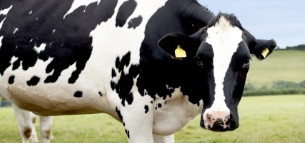Dairy Standards
DOCUMENTS AND PROCEDURES Version 5.0 (modified)
Click to view
Key – Those standards which have greater significance (all other standards are normal)
Recommendation – Those which do not affect certification
New – A completely new standard which the member must now adhere to
Revised – A standard that has changed and requires the member to take some different or additional action to before
Upgraded – The standard has been upgraded to a Key standard or from a Recommendation to a full standard
Appendix – Referenced in ‘How you will be measured’. Indicates that additional information is provided in the Appendices, which are available at the end of each section.
DR.DP.1 Key
The farm, as a whole, must present an acceptable and tidy appearance to the general public. The site management must not present a food safety, animal welfare or environmental risk
How you will be measured
DR.DP.1.a
DR.DP.1.b
DR.DP.1.1
A farm map must be present and areas of specific risk are identified
How you will be measured
DR.DP.1.1.a
Farm map
DR.DP.2
A documented plan for the effective management of serious incidents and potential emergency situations that threaten the welfare of livestock, food safety or the environment must be in place.
How you will be measured
DR.DP.2.a
DR.DP.2.b
DR.DP.2.c
DR.DP.2.d
Contingency/emergency plan
DR.DP.3
Systems must be in place for recording, investigating and resolution of any complaints and/or sampling results that are relevant to the requirements of the Red Tractor Standards (REVISED)
How you will be measured
DR.DP.3.a
Complaint/Sample records
DR.DP.4
The Nominated vet or vet from the nominated vet practice must be informed of each antibiotic failure.
How you will be measured
DR.DP.4.a
DR.DP.4.b
DR.DP.4.c
- Complaints record
- Vet review record
DR.DP.5
You must have a written breeding and management policy in place and implemented so there is no routine euthanasia of calves.
How you will be measured
DR.DP.5.a
DR.DP.5.b
DR.DP.6
Where a member has 2 or more antibiotic fails in a 12-month rolling period the BCVA/Dairy UK investigation report form must be completed (NEW)
- For information on farm fires see the Defra guidance document ‘Farm Fires – Protecting Farm Animal Welfare’: https://www.gov.uk/government/publications/farm-fires-protecting-farm-animal-welfare
- For additional guidance on animal welfare in severe weather visit Keeping farm animals and horses in extreme weather: https://www.gov.uk/guidance/keeping-farm-animals-and-horses-in-extreme-weather
- For additional practical guidance on dealing with livestock in droughts and flooding visit: BRP+ Managing cattle and sheep during extreme weather events:
More Standards
- DP.1 – Any waste awaiting collection or disposal is stored appropriately i.e. in a dedicated area away from livestock. Old machinery, tyres, wire and silage wrap are stored neatly. External areas around buildings should be kept clear to discourage vermin.
- DP.1.1 – One or more maps may be used and this may be held as a hard copy or as an electronic document
- DP.3.a – Complaints made by local authority, general public, customers (e.g. abattoir feedback) or other. Complaints including, but not limited to, milk test failures, medicine residue levels, dirty stock, welfare and environmental issues
